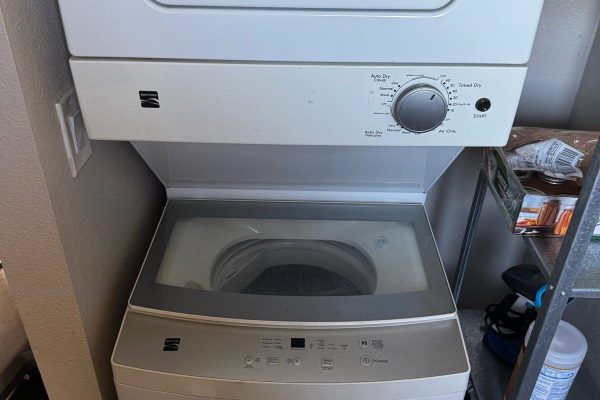Baking perfection in your oven isn`t always easy, especially when you`re faced with an all-too-common issue: uneven baking. Here, we`ll explore the common causes of uneven baking and share solutions to ensure consistently delicious results every time
⠀
Common Causes of Uneven Baking
⠀
Uneven baking can be frustrating, especially when you have specific expectations for how your baked goods will look and taste. If your cookies are browning faster on one side or your cakes are coming out undercooked in the center, several factors could be responsible:
⠀
- Faulty Temperature Sensors
– Modern ovens rely on temperature sensors to maintain the correct temperature inside. When these sensors malfunction, the oven may either run hotter or cooler than the set temperature, leading to inconsistent baking. For example, a malfunctioning sensor could cause one side of the oven to heat more than the other, producing a lopsided or unevenly cooked dish.
⠀
- Defective Heating Elements
– Most ovens have both top and bottom heating elements. If one of these elements is damaged or broken, the heat distribution becomes unbalanced. This often leads to dishes that are overly browned on one side while remaining undercooked on the other.
⠀
- Improper Rack Placement
– Not every part of the oven receives the same amount of heat. Different racks can affect how evenly your food bakes. Generally, placing items in the center rack is ideal for even cooking. However, different recipes sometimes require specific rack positions, and failing to adjust for this could cause uneven baking.
⠀
- Old or Faulty Oven Seal
– The door seal, or gasket, is designed to prevent heat from escaping. Over time, seals can wear out, allowing heat to escape unevenly and affecting the overall temperature within the oven. This can lead to inconsistent cooking results, as parts of your food may bake faster while others lag behind.
⠀
- Hot Spots in the Oven
– Hot spots are areas inside the oven that get hotter than the rest of the oven. Over time, every oven can develop hot spots due to wear, grime buildup, or calibration issues. They can cause certain parts of your dish to cook more quickly than others, leaving you with uneven results. Regularly rotating your food or using an oven thermometer to test for hot spots can help, but consistent issues might require professional recalibration.
⠀
- Poor Air Circulation
– Modern convection ovens are designed with fans to circulate hot air evenly. If this fan isn’t working correctly, it can cause significant unevenness in baking. Similarly, overloading your oven or blocking the fan can restrict airflow, leading to patchy heat distribution.
Troubleshooting Tips for More Even Baking
⠀
If you’re dealing with uneven baking, there are a few steps you can take to improve your baking results:
⠀
- Use an Oven Thermometer
– To ensure that your oven’s internal temperature matches the temperature on the control panel, use an oven thermometer. If there’s a significant discrepancy, your thermostat or temperature sensor may be the issue.
⠀
- Place Food in the Center
– Whenever possible, place baking dishes in the center of the oven to benefit from the most balanced heat distribution. Keep multiple trays separated to allow air to circulate, and avoid overloading the oven, which can obstruct airflow.
⠀
- Rotate Your Dishes
– Rotating your dish halfway through cooking can help distribute heat more evenly, especially in conventional ovens. This simple step can minimize the effect of hot spots and create more consistent results.
⠀
- Clean Your Oven Regularly
– Built-up grime can impact airflow and even cause hot spots. Cleaning your oven regularly will not only prolong its lifespan but also improve your cooking results.
⠀
- Check the Door Seal
– Visually inspect the door seal and look for signs of damage or wear. A compromised seal can affect temperature stability, so replacing an old or damaged seal can be a quick fix for uneven baking.
⠀
- Don’t Block the Fan in Convection Ovens
– In convection ovens, avoid placing dishes directly in front of or near the fan, as this can disrupt airflow. Convection fans should distribute heat evenly, but they need proper clearance to do so effectively.
⠀
When to Seek Professional Help
⠀
While some baking inconsistencies can be resolved with a few adjustments, ongoing problems may indicate deeper issues within the oven that require professional repair. Here are a few signs that it’s time to call a technician:
⠀
– Persistent hot spots, even after rotating dishes or cleaning
– Temperature discrepancies, even after calibrating or using a thermometer
– Faulty heating elements that don’t respond to troubleshooting
– Issues with the fan in a convection oven that impede air circulation
⠀
At Poway Appliance Repair Service Center, we specialize in diagnosing and fixing all types of oven issues, ensuring that your oven performs at its best. Whether it’s a faulty sensor, damaged heating element, or broken fan, our expert technicians will quickly identify the problem and get your appliance back to baking perfection.
For professional, prompt, and reliable oven repair, contact Poway Appliance Repair Service Center. Call us today to set up an appointment and say goodbye to uneven baking once and for all!
Contact us


